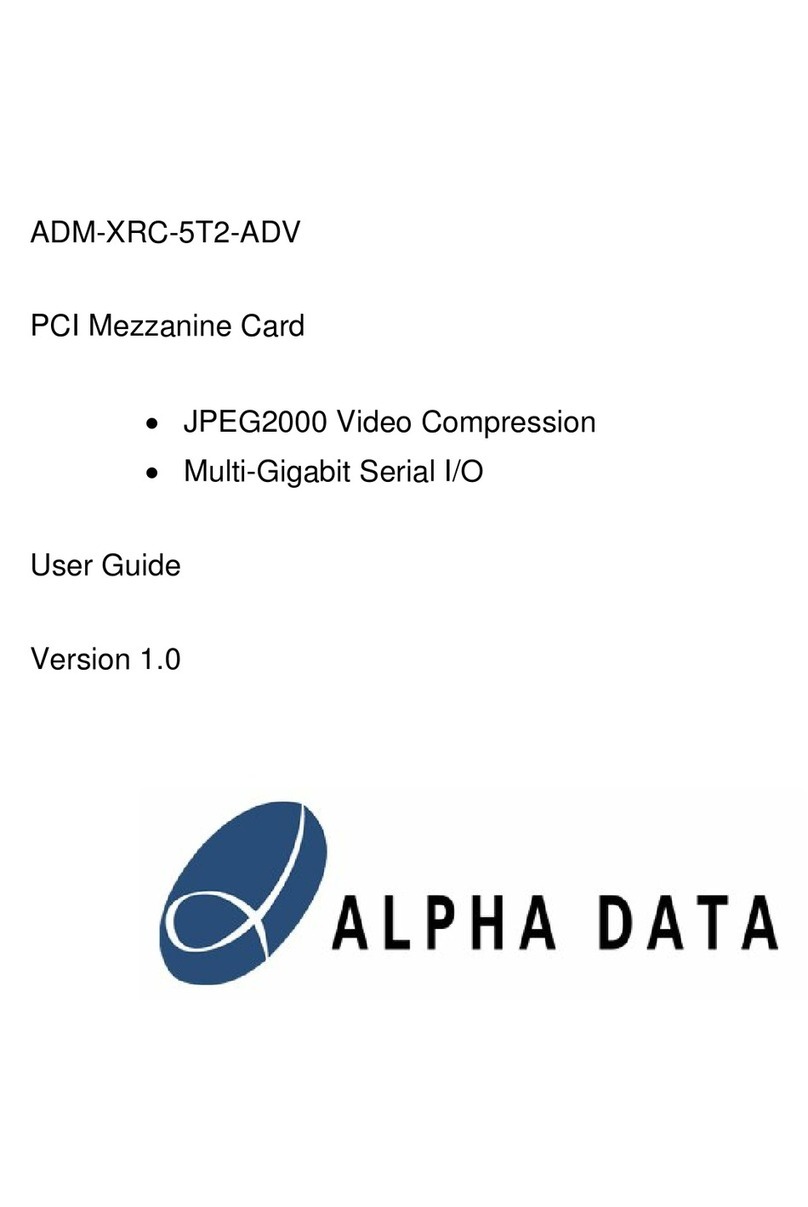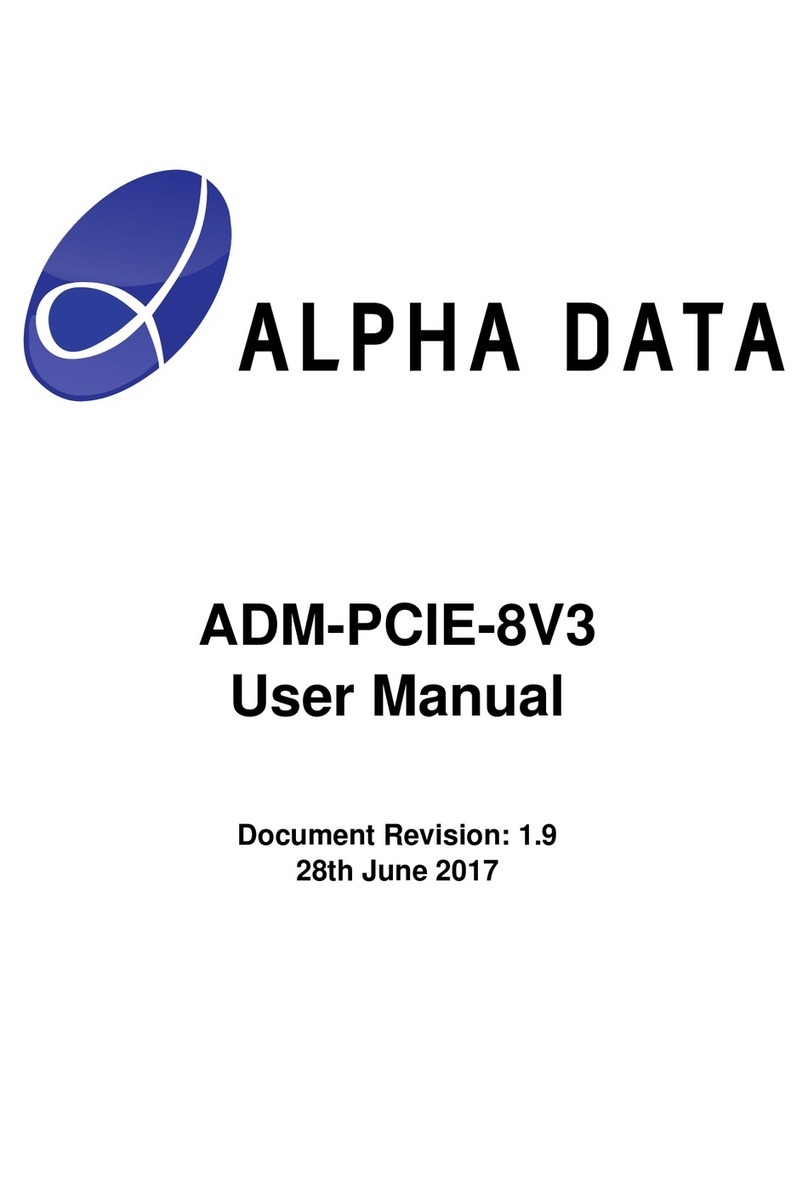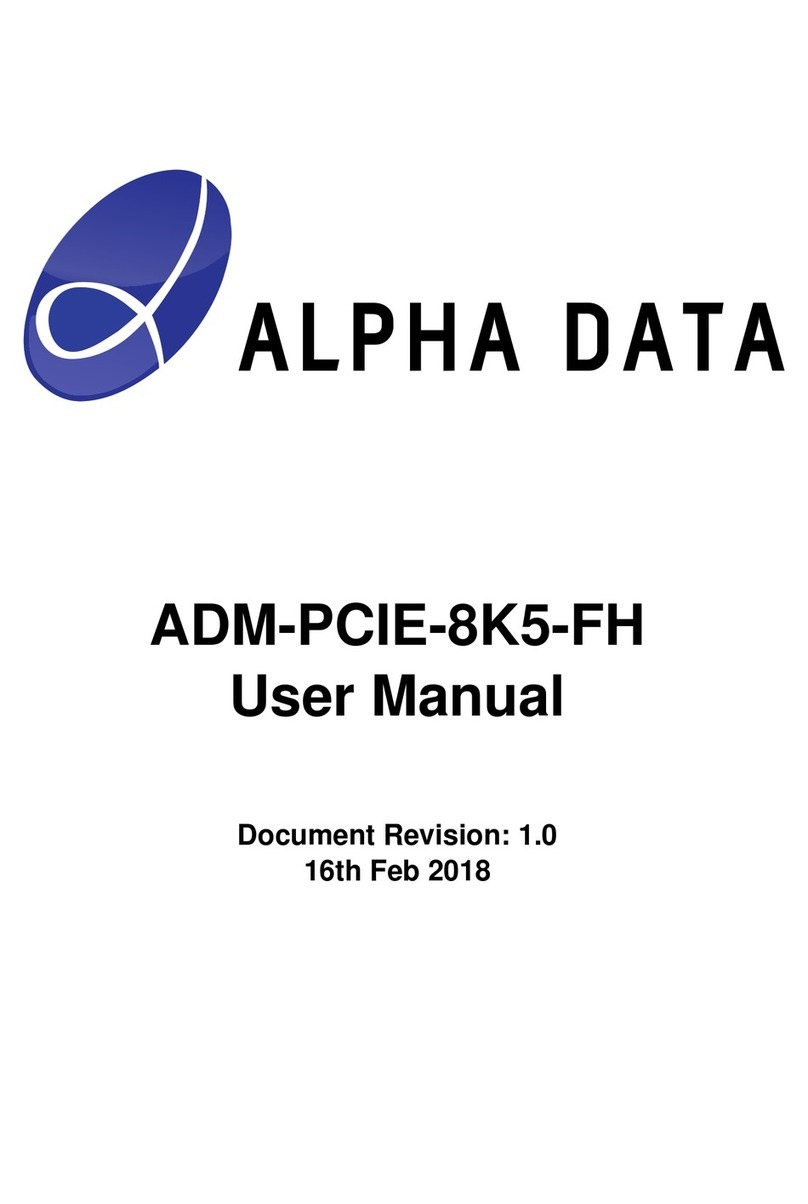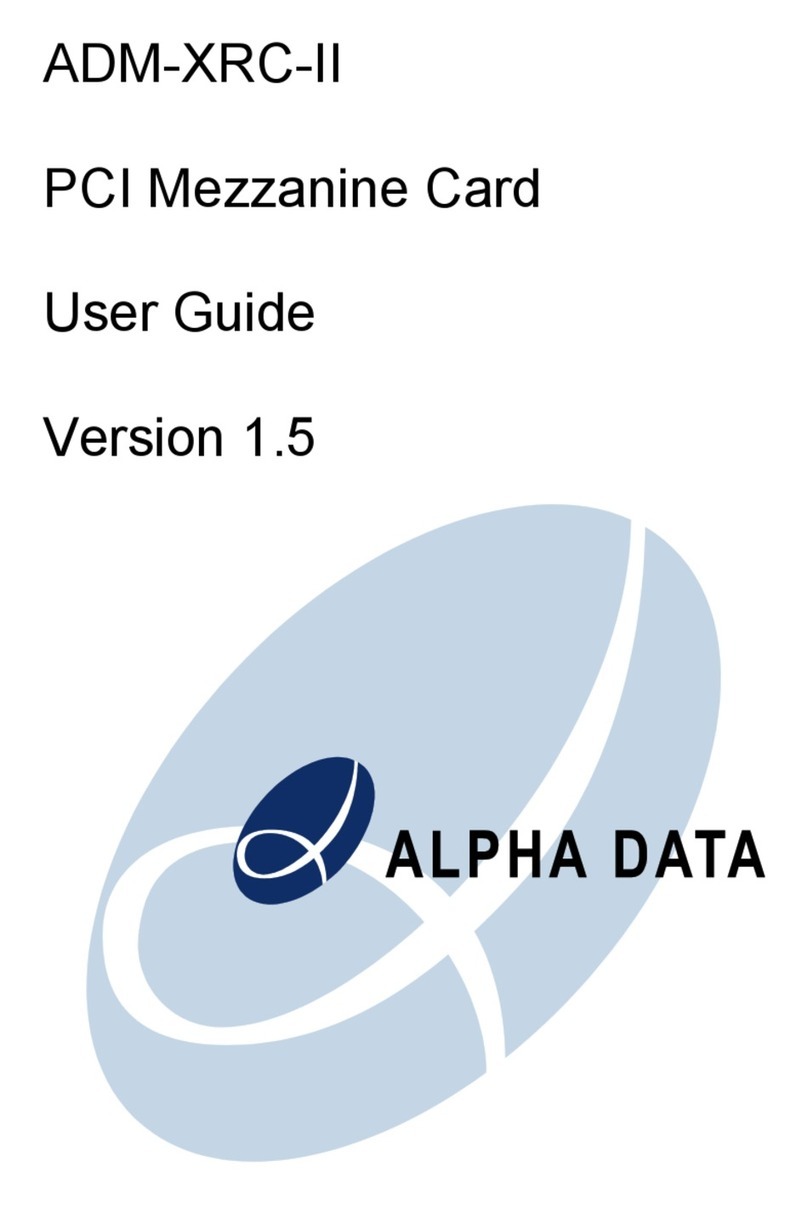ADM-XP User Manual
ADM-XR-IIPro User Manual
Page 4 of 29 Version 0.2
Contents
1INTRODUCTION .......................................................................................................................................... 5
1.1 SPECIFICATIONS ...................................................................................................................................... 5
2INSTALLATION ........................................................................................................................................... 6
2.1 MOTHERBOARD REQUIREMENTS ............................................................................................................... 6
2.2 HANDLING INSTRUCTIONS ........................................................................................................................ 6
2.3 INSTALLING THE ADM-XP ONTO A PMC MOTHERBOARD ........................................................................... 6
2.4 INSTALLING THE ADM-XP IF FITTED TO AN ADC-PMC .............................................................................. 6
3HARDWARE OVERVIEW............................................................................................................................ 7
4LOCAL BUS ARCHITECTURE ................................................................................................................... 9
4.1 LOCAL BUS SIGNALS ................................................................................................................................9
4.2 LOCAL BUS TRANSFERS........................................................................................................................... 9
5TARGET FPGA.......................................................................................................................................... 10
5.1 CONFIGURATION.................................................................................................................................... 10
5.2 CLOCKS ................................................................................................................................................ 10
5.3 SDRAM DDR MEMORY ........................................................................................................................ 12
5.4 DDR2 SSRAM..................................................................................................................................... 13
5.5 FLASH MEMORY .................................................................................................................................... 14
5.6 POWER SUPPLY .................................................................................................................................... 14
6FRONT PANEL I/O .................................................................................................................................... 15
6.1 SAMTEC 180 CONNECTOR - U8 ............................................................................................................. 15
6.2 ROCKETIO MULTI-GIGABIT TRANSCEIVERS – U13 .................................................................................. 17
7USER IO – PMC PN4 (REAR PANEL)...................................................................................................... 18
8JTAG ACCESS .......................................................................................................................................... 19
8.1 JTAG HEADER (J6)............................................................................................................................... 19
9XRM-ETH ................................................................................................................................................... 20
9.1 INTRODUCTION ...................................................................................................................................... 20
9.2 GENERAL PURPOSE I/O ......................................................................................................................... 20
9.3 RS232 I/O............................................................................................................................................ 20
9.4 10/100 ETHERNET ................................................................................................................................21
9.5 INPUT AND OUTPUT ASSIGNMENTS (ADM-XP)........................................................................................ 22
9.5.1 Mictor I/O...................................................................................................................................... 22
9.5.2 DCI Terminations ......................................................................................................................... 22
9.5.3 Ethernet MAC............................................................................................................................... 23
9.5.4 RS232 .......................................................................................................................................... 23
10 USER I/O XRM IO146 FRONT PANEL VARIANT – REV2.0................................................................ 24
11 USER I/O XRM IO146 – ROCKET ......................................................................................................... 27































